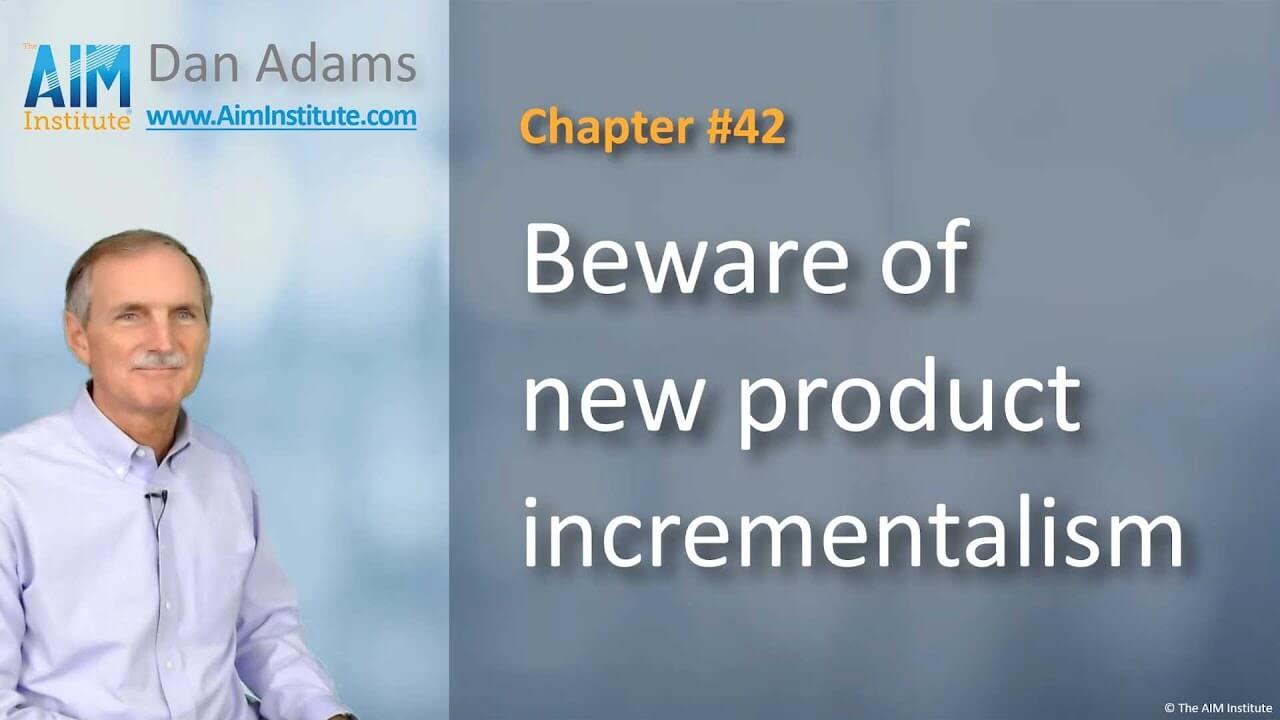B2B Organic Growth Series: Chapter #42
Beware of new product incrementalism

Subscribe to the series. Get 50 free videos, sent daily or weekly.
It may seem safe to only work on “me-too” and incremental new products. But it’s not. Adams’ Risk Paradox is, “A business built on low risk is at great risk.”
b2bgrowth.video/42 Video length [2:20]
Transcript of Chapter 42
In the last video, you saw how technology development feeds product development. Your technology development is the “pantry shelf” from which you pull down ingredients for exciting new products… so never let it go bare. It also helps you avoid incrementalism and what I call the “Risk Paradox.”
If your new products are to rise above competitors’ products, you must do a better job of understanding customer needs… and finding solutions to those needs. These needs might be spoken … unspoken… or even unimagined. And the solutions could be existing… emerging… or new-to-the-world. Needs and solutions become less obvious in these directions. Against this backdrop, consider four types of new products.
Me-Too products simply match competitors. Incremental provide modest improvement in predictable areas. Next-Generation provide significant new value to customers. And Breakthrough products change the basis of competition in the industry.
Successful companies are proactive… but most are reactive, pursuing incrementalism. Here’s one reason: Imagine you’re asked to lead a project team and can choose Breakthrough… Next-Generation… Incremental… or Me-Too. If you want to keep your personal risk as low as possible, you might pick a Me-Too project, with clear design goals and lower likelihood of failure.
But what if you’re in charge of the business? Is it less risky if all the projects are Me-Too? No, because this puts your business on a commodity death spiral, as we saw in an earlier chapter. This is my Risk Paradox: “A business built on “low risk” projects is at great risk.”
Here’s another oddity: Top performers don’t allocate that much to transformational projects… just 10%. And yet they get 70% of their financial returns from these projects.
So what are these companies doing differently? Glad you asked. We’ll explore this in the next three chapters.
Comments